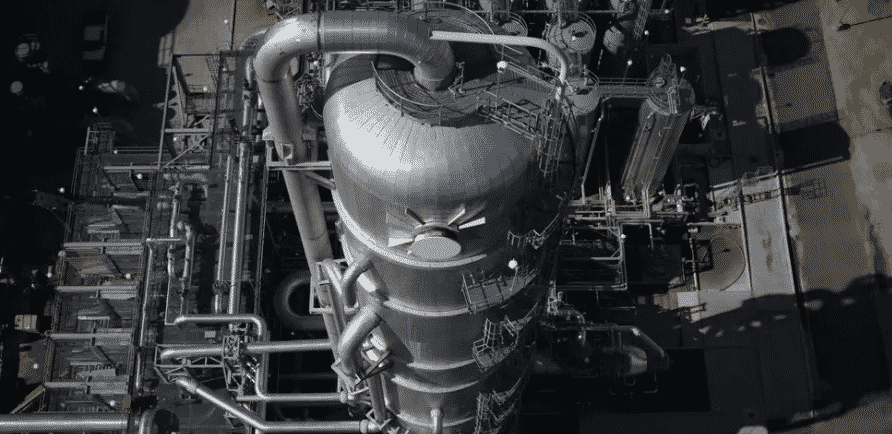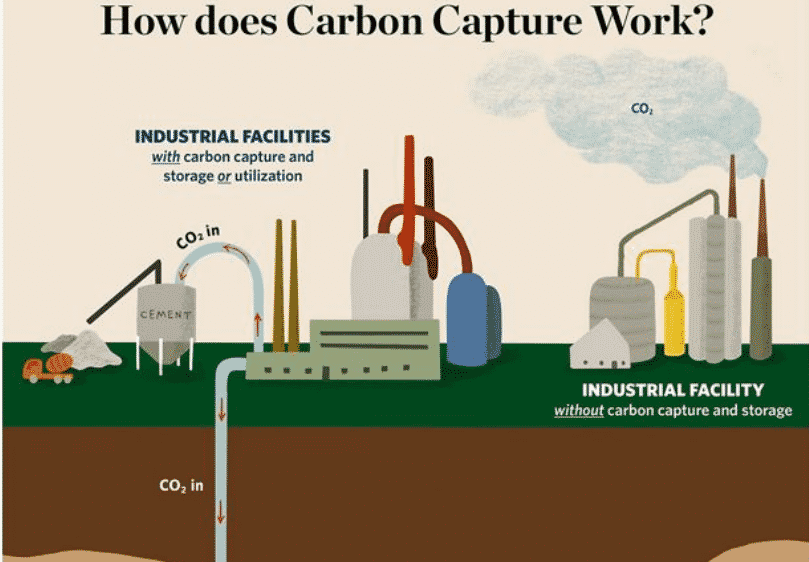Chevron joined the first-of-its-kind carbon capture project in Texas to bury CO2 in the seafloor of the Gulf Coast.
The project will be the first to store carbon offshore in the U.S.
Joining Chevron in this pioneering initiative are Talos Energy and Carbonvert, a carbon capture and storage developer.
The goal of the project is to capture CO2 from the smokestacks of industrial facilities in Texas. These particularly include the sites in Port Arthur and Beaumont.
The captured carbon will travel in a pipeline to an offshore tract. It will then be pumped into the seafloor under Texas-owned waters on the Gulf Coast.
The image below shows how carbon capture works in a typical underground CO2 injection.
Chevron’s Bayou Bend Carbon Capture and Storage Project
Chevron project partners, Talos and Carbonvert, made a joint venture called the Bayou Bend CCS – carbon capture and storage. It’s the first-ever and the only offshore lease devoted to CO2 sequestration.
Under their MOU, Chevron takes the majority stake in exchange for cash and capital needed by the project. Equity shares in their joint venture would be 50% for Chevron and 25% for each of the other two companies.
Bayou Bend CCS is the winner of the lease bidding process held by the Texas General Land Office last August. The agency handles state-owned lands and mineral rights.
Chevron’s carbon capture project Bayou Bend gave the three partner firms access to over 40,000-acre expanse on the Gulf Coast.
They estimated that this area can store 225 to 275 million metric tons of CO2. That amount equals around 40% of Texas’ energy-related CO2 emissions in 2019.
The Role of Carbon Capture and Storage in Reducing Emissions
Climate justice advocates find carbon capture and storage a controversial CO2 reduction option. They contend that CCS will further extend the use of fossil fuels and the facilities that use them.
But for major industries, carbon capture is one of the few measures they can opt to cut their emissions. This is true in the case of oil and gas, cement, and steel industries.
And so, Chevron invested in the Gulf Coast carbon capture project. Other firms and governments also think that the location is perfect for this pioneer CCS.
The site has a high concentration of industrial facilities and a big potential to capture CO2 offshore.
Estimates from the Department of Energy show that geologic formations in the area are great. It has the capacity to sequester hundreds of billions of metric tons of CO2.
In October 2021, Exxon Mobil suggested turning the 50-mile-long Houston Ship Channel into a CCS hub. This hub will carry the CO2 in pipelines and inject it deep under the seafloor of the Gulf of Mexico.
The oil and gas giant called on public and private sectors to raise $100 billion for that aim. Chevron is one that got interested in this carbon capture venture.
What’s in it for Chevron?
The CCS solution can get so costly but there’s a tax credit accessible to help project developers. It’s called 45Q which offers as much as $50 for each ton of CO2 kept underground for a long time.
But it remains a question of how the Bayou Bend CCS project can benefit from the tax credit. Plus, there’s no existing regulation requiring firms to capture their CO2 emissions.
Yet, Chevron gets inspired by the climate threat and growing pressure from investors. The energy firm also has properties on the project site. It includes its Phillips Chemical plant in Port Arthur which violated the Clean Air Act.
The company faced penalties from the US Justice Department and
the CCS project is a part of its efforts to address the sanctions.
Chevron also announced a $10 billion dollar investment into low carbon business initiatives last year. Half of that budget will be spent on reducing emissions from fossil fuel initiatives. And $3 billion is for carbon capture and offsets.
The Bayou Bend project is in its very early stage and it will take a long way to materialize.
Chevron and its partners need to do “extensive site characterization” first before the carbon capture project can start. They also have to get a permit from the Environmental Protection Agency to begin drilling.
Still, the parties to this joint venture are optimistic about its potential.
According to Talos CEO and president,
“Chevron brings significant expertise and experience to this project… and we are excited about what this partnership can deliver.”
While Carbonvert’s CEO said that,
“We look forward to the opportunity to partner with Chevron on such a monumental project supporting decarbonization and partnering with customers on their paths to net zero.”


